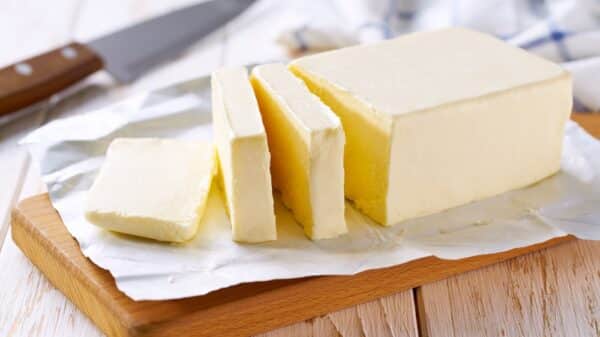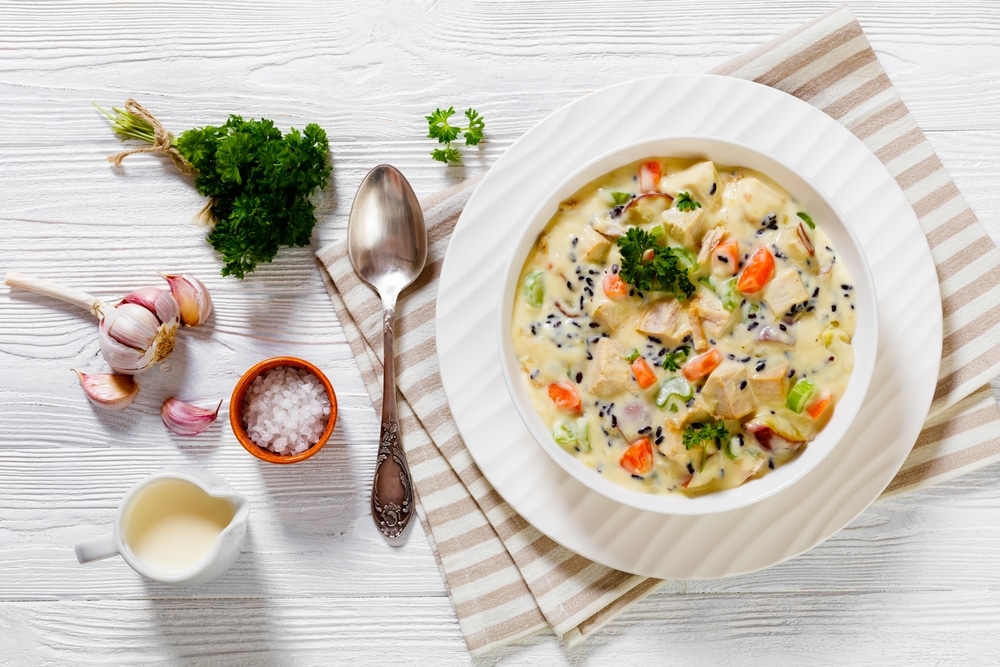To start, it’s all about simmering your leftover soup to reduce its liquid content. A good rule of thumb is to let it bubble gently on the stove until it thickens to your desired consistency. If you find your soup is still too thin, consider whisking in a bit of cornstarch mixed with cold water as a thickening agent. A little goes a long way, so add it gradually and keep stirring to avoid clumps.
Now, let’s talk flavor. Using leftover creamy soups in gravy allows you to tap into the rich flavors already present, making for a quick and satisfying dish. Imagine drizzling leek and potato gravy over fluffy biscuits or pouring rich mushroom gravy over mashed potatoes—the simple act of transforming a leftover can turn a mundane dinner into something special. And if you’re feeling adventurous, why not drizzle that French onion gravy over roasted veggies or even atop a juicy meatloaf? It’s a chance to get creative, using what you have on hand. Plus, it feels great to reduce waste while enjoying delicious, comforting meals.
And remember, this doesn’t just have to be a solo venture in the kitchen; involve your kids or partner in the cooking process! It can turn into a fun family activity, and you get to relish the flavors together, savoring the thought that you turned last night’s soup into tonight’s dinner masterpiece.
So the next time you find yourself with leftover soup, don’t just toss it back in the fridge. Think of it as a blank canvas ready for a flavor makeover. By using your ingenuity, those remnants can reinvigorate your meals, minimize waste, and add a sprinkle of creativity to your family’s dining experience. After all, cooking is not just about following recipes; it’s about making the most out of what you have in a way that resonates with your family’s taste.To turn your leftover soup into something deliciously versatile, start by transforming it into gravy.
Pour the remnants into a saucepan and bring it to a gentle boil over medium heat. If your soup is quite watery, you can elevate its thickness with a bit of flour or cornstarch. Mix a tablespoon of your chosen thickener with a splash of cold water until it’s smooth, then stir it into the bubbling soup. Let it simmer for a few minutes, continually stirring, until it thickens to your desired consistency. And hey, don’t forget to taste as you go! A sprinkle of herbs or a splash of cream can uplift the flavor profile beautifully. Once it’s just right, congratulations—your leftover soup is now a savory gravy that can amp up any dish.
Now, let’s talk about enchiladas. These delightful rolls are perfect for using leftover soup creatively. The saucy nature of enchiladas makes them forgiving and adaptable, so feel free to experiment. Imagine using your leftover black bean soup as a hearty filling. Just simmer it down to avoid excess broth or puree some beans to give it that perfect thicker consistency. The same goes for chicken noodle or vegetable soups; they can effortlessly transition into a flavorful filling. If you’re working with smooth blended soups, try turning them into enchilada sauce. A well-seasoned, thickened tomato soup can become an ideal base when spiced with cumin and coriander. Cooking is an adventure—don’t be afraid to play around and find unexpected flavor combinations that might just become your new favorites!
Another nifty idea is to use leftover soup to prepare grains. Whether you’re in the mood for rice, quinoa, or something a bit more exotic like millet, cooking them in soup instead of water can add incredible flavor with little extra effort. Think about it: Your soup is likely brimming with aromatics, herbs, and spices, which will infuse the grains beautifully. Just a heads-up, though—if your soup is thick, you’ll want to thin it out with a bit of extra water or stock so that it’s suitable for cooking the grains. The leftover chunks in the soup? They’ll add substantial texture to your dish. So, if you find yourself with a creamy soup, just water it down a bit to keep things balanced, and let your grains soak up all that goodness.
Next up, let’s get creative with savory pies. It’s an excellent way to repurpose soup remnants. The beauty of pies is that you can truly let your imagination run wild! Almost any soup can be morphed into a filling. For instance, tomato soup can be thickened and seasoned to create a filling reminiscent of a curried dish. Creamy soups like cream of mushroom work wonders in hearty chicken pies, while simultaneously offering a fabulous vegetarian option if you swap in plant-based proteins. Just remember, pie fillings shouldn’t be too watery to avoid that dreaded soggy bottom, so you might need to reduce or thicken the soup accordingly.
If you’re in the mood for breakfast or brunch, how about savory pancakes? Who said pancakes need to be sweet? Savory pancakes can elevate your breakfast game and beat that post-sweet slump. Use your leftover soup to add depth to your batter—smooth soups make for a traditional pancake, while chunky ones lend a fun texture like a kimchi pancake or a sweet corn delight. All you have to do is mix the soup with flour until you hit that batter consistency. If it’s too thick, add a splash of milk or water. Optionally, toss in some baking powder for a lovely rise, and don’t hesitate to tweak the seasoning to your taste. Once you hit the skillet, you can top them off with eggs, cheese, veggies—whatever strikes your fancy!
Finally, let’s revisit the memories of veggie meatloaf. Forget about those store-bought substitutes; here’s your chance to create a meatless meatloaf bursting with flavor using leftover soup. Whether you opt for mashed lentils, beans, grated tofu, or a hearty mixture, the key is to keep your mix moist. Here’s where your leftover soup shines—about half to one cup can act as a perfect binder for those dry ingredients. Layer in nuts or cooked vegetables for additional texture, and you’ll have a deliciously satisfying meal that’s both nostalgic and nourishing.
Turning leftovers into something scrumptious doesn’t have to be a daunting task. Whether it’s transforming soup into gravy, using it for enchiladas, or getting creative with pies and pancakes, the options are endless. Let your fridge inspire you, and soon, your leftovers will become star dishes rather than forgotten remnants in your kitchen!You can really get creative with leftover soup, transforming it into a variety of delicious dishes.
When it comes to incorporating various vegetarian ingredients, the sky’s the limit! Think about the broad spectrum of flavors that can guide your choice, from savory basics like onion and garlic to more vibrant, spiced options featuring cumin, cardamom, or smoked paprika. The spices and seasonings you choose will play a huge role in how the final dish tastes, so trust your instincts and don’t hold back on experimenting with your favorites.
Once you’ve settled on your soup, it’s time to mash or blend those flavorful ingredients. Don’t worry if your mixture turns out a bit on the wet side; that’s an easy fix. Just throw in some breadcrumbs, flour, oats, or even cooked rice. These will help to absorb some of that moisture and give you a heartier consistency. Pour your mixture into a loaf pan, pop it in the oven, and give it about 30 minutes of baking. Before you know it, you’ll have a warm, comforting dish that’s sure to please.
Now, let’s talk about giving new life to your soup by using it as a base for a hearty stew. The truth is, soup and stew are like close cousins—just one is thicker than the other. Stews can be packed with a variety of vegetables and proteins while being tailored to your taste preferences. By choosing to use leftover soup as a base for your stew, you’ve already cut down on the tedious prep work. You’ve sautéed aromatic onions, bloomed those delicious spices, and simmered all those flavors together. This not only saves you time but also elevates the final dish with a depth of flavor that’s hard to achieve when starting from scratch.
If you’re short on time, you can skip the initial aromatics and just simmer your stew ingredients right in the leftover soup. It’s a simple way to whip up a delicious meal with minimal effort. When it’s time to add liquid to your stew, feel free to replace part of it with your soup. Whether your recipe calls for stock, wine, or just water, the leftover soup will act as a powerhouse of flavor. Just remember, if you’re using equal parts soup and another liquid, consider halving your usual salt amount since your soup is likely pre-seasoned. Adjust the herbs and spices to suit your taste—you have the freedom to play around with that!
Lastly, let’s not overlook the magic of turning leftover soup into risotto. If your soup is broth-heavy—like a hearty chicken noodle or a flavorful bean soup—it’s the perfect starting point. The broth will infuse your risotto with tons of flavor, and the chunky bits of vegetables will add a pleasant texture, making every bite enjoyable. First thing’s first: strain the soup through a fine-mesh sieve, collecting the broth in a saucepan while setting aside the solids for later. If your broth doesn’t measure up to the amount needed for your risotto recipe, just grab a store-bought one to fill in the gaps. Keep that broth warm on low heat while you get the risotto going.
Start by sautéing some onions until they’re soft and fragrant, then toast your risotto rice just like you usually would. Gradually add in the warm broth, stirring frequently to develop that creamy texture you’re after. As you near the finish line, toss in those reserved chunky vegetables and proteins, giving them ample time to heat through. To complete your risotto, finish it off with a swirl of butter and a generous handful of Parmesan cheese for that creamy finish.
So the next time you’re faced with leftover soup in your fridge, don’t just think about having a repeat meal. Get creative and make something new and exciting that will have your family guessing just how you did it!
Image Source: from my point of view / Shutterstock































